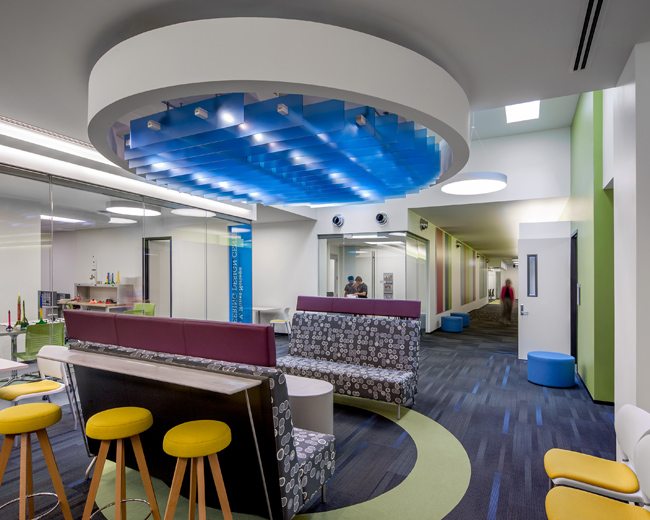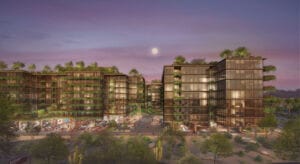Whether it’s building a research facility from the ground-up or renovating a historic stadium, institutions of higher education must always be — or appear to be — on a competitive edge.
ASU’s decision to enter a $162M renovation of Sun Devil Stadium in Tempe, Ariz., comes in the wake of other Pac-12 schools’ stadium upgrades and ground-up facilities. And the DPR Construction team awarded the 10-story, 245KSF Biosciences Partnership Building project has planned and priced at least five different scenarios simultaneously so that if one or more is accepted or eliminated, there isn’t much time lost in the design process.
“The universities are under a great deal of competitive stress, if you will,” says DPR’s Senior Construction Manager Peter Berg. “They’re competing with all the other universities to be the best, and they’re having to do it with less resources and less funding around the state.”
He adds that “the pace of change has accelerated to the point that it’s hard for them to see that future and plan far enough in advance so that the buildings they’re creating when it’s completed it’s still relevant.”
Planning meetings can radically change the direction a project is headed, but one thing never changes, says Berg, and that’s the start and end dates for a development.
“With increasing choices for learning environments and teaching styles, both on campus and on-line, education facilities need to project their investment in recruiting the top students through every facet,” says David Calcaterra, principal at Deutsch Architecture Group.
This is achieved, he says, by incorporating advanced technologies in the classroom as well as flexibility in the learning spaces for collaboration or focus-based learning.
“Now to be competitive, schools must also incorporate inspirational environments that foster creative thinking,” says Calcaterra. “Gone are the days of windowless classrooms with rows of desks.”
Deutsch was the architect on Adolfson & Peterson Construction’s renovation of the Glendale Community College Technology 1 Building, which was built in 1968.
“The aging facility was badly in need of a complete modernization and a significant upgrade to its infrastructure and technological capabilities,” says Michael Schroeder, director of marketing for A&P.
To make the facility an inspiring space that accommodates all methods of learning, Deutsch focused on natural light, good ventilation and sound quality. This supports good student learning, Calcaterra says, and faculty and staff retention.




